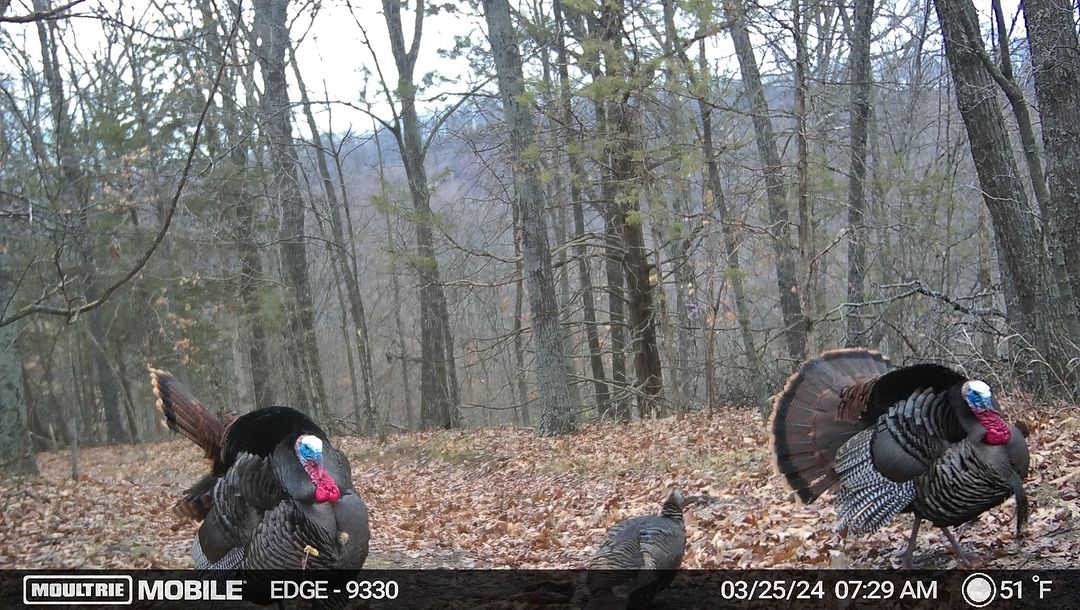Six Weird Facts About Turkeys
By Alan Clemons
Years ago, when I first began turkey hunting, one of the weird things I was told was that a gobbler would never fly across water. Calling a bird on the other side of a big slough, swamp, or river would be a fruitless effort other than frustration at hearing him gobble.
Well, that’s a load of hooey. Turkeys do fly across water. I’ve seen them do it. I’ve had them fly away from me across swamps. It’s not like they do it all the time, but it also isn’t like they never do it. Calling one to you across water might take some aggressive efforts to coax him over, but it’s possible.
Turkey hunters have spun tales of mystery about America’s largest game bird for centuries. Native Americans hunted them, as did colonists once they settled in the Northeast and began taking land south and west. When famed naturalist William Bartram journeyed in 1773-77 through the Carolinas, Georgia, and Florida, he chronicled the wild turkey’s populations and wily nature. In the early 1900s and onward, hunters matched their wits with the Eastern, Merriams, Rio, and Osceola turkey species in innumerable ways.
Here are some of the weird traits of turkeys and a myth or two about them.
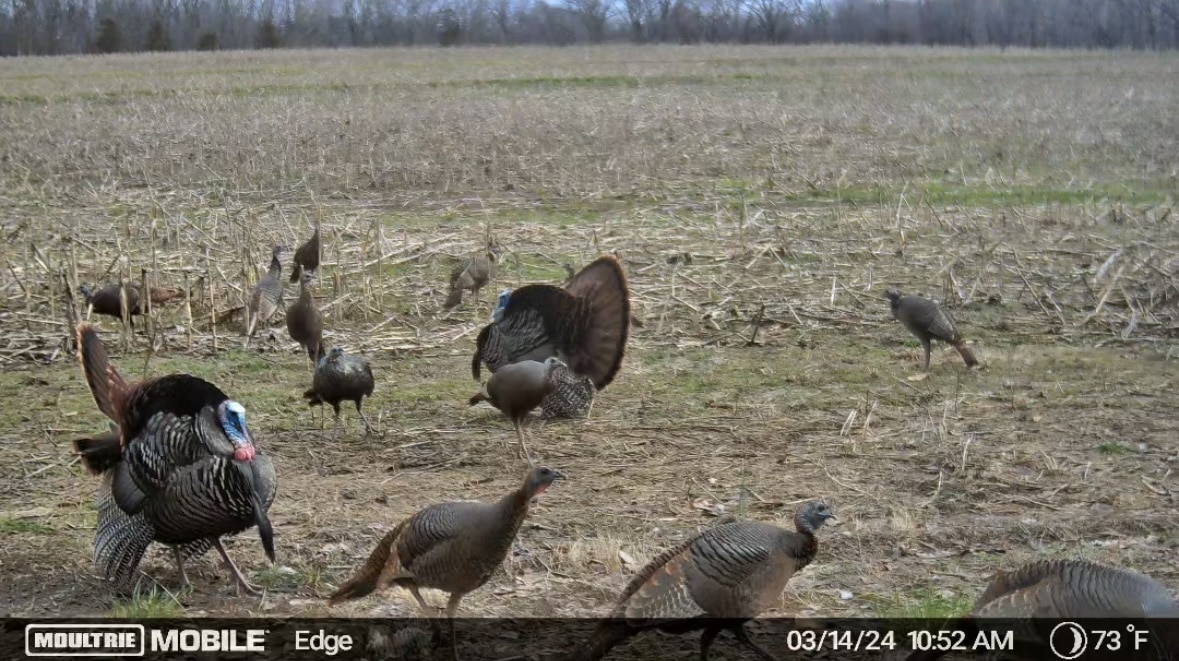
Identify by Poop
If you’re scouting for turkeys or moving from one setup to another, poop can give you clues about what’s happening in the area.
Yep, keep an eye out for turkey poop. Look for it in roads or fields where the birds may be dusting, feeding, or strutting. It’ll be harder to see in the woods unless they have scratched leaves for grubs or forbs. The poop usually is dark green or brownish in color, and perhaps with a swath of white.
Hen poop is shaped like the letter “J.” If you see a lot of J-shaped poop, then it’s a good sign there’s a hen party going on. Gobbler poop is more spiral-shaped. You may find it by itself in a road or dusting area or on the edge of plowed fields where a big bird is strutting or loafing.
Listening is critical to turkey hunting, but don’t forget to look for the poop.
Hens and Laying Eggs
About 20 years ago, I had the good fortune to hunt with Tom Kelly at Westervelt when he hosted his turkey weekends at the famed Alabama lodge. Kelly and I hunted for two days, and at lunch and night, he had Q&A sessions about turkeys and hunting.
One evening, he began talking about how many hunters hated the last weeks of the season when it was hot and supposedly a struggle to find a gobbler. But he said that was possibly when it might be the best time to kill one because the hens had finished laying their clutch of 8-12 eggs and were on the nest more often during the day. That meant many lonely gobblers were wandering around searching for a hot hen, which could be a hunter in the right spot.
Hens don’t lay their eggs all at once after being bred by a gobbler. They lay once a day over about two weeks, and then she will incubate them for about 28 days. She will sit on the clutch for several hours daily in a usually well-hidden nest on the ground. When the eggs are exposed, they’re at greater risk to predators such as skunks, snakes, and raccoons. But, also during this time, the sunlight helps keep them warm. Toward the end of the incubation period, the hen will sit longer on the net each day until they hatch.
If the nest gets destroyed from fire, flood, or predation, she may lay another clutch if it’s early enough in the season. If not, the nest and eggs will likely be lost, and the local population will be impacted.
Phenomenal Eyesight
Turkeys have phenomenal eyesight that is better than humans at a distance and up close, especially regarding movement. A hen or gobbler standing in a field 100 or more yards away may look like a soldier snapping to attention as a general approach if you’re careless with your movements. They see you and are trying to figure out what you are. Keep being careless and they often will start moving away.
Scientific American reports that turkeys have three times better vision than humans with 20/20 vision. They have almost double the number of cones and photoreceptors. They also have 270-degree vision, meaning yes, they (almost) have eyes in the back of their heads. They’re acutely aware of ultraviolet light; the Sport Wash and other UV-killing products you use for deer hunting might be better used in turkey season.
Years ago, I was lucky enough to have rights to a turf farm that included some wooded areas that couldn’t be farmed for turf. The owners hunted deer but not turkeys, and since I knew the head guide, they allowed me to hunt. One afternoon, while nestled against a tree in the shade, I watched a lone hen emerge across the plowed plot. She was about 75 yards away, nonchalantly picking and plucking at the bugs amid the sprouting wheat.
I shifted ever so slightly, and she hammered up like a periscope. Dang! Busted! I didn’t move as she slowly stepped toward me. Before long, she was probably five yards away, still as a rock and boring a hole through me. I closed my eyes — the only thing exposed and moving — and counted to 20, thinking that might help her relax. When I opened my eyes, she was halfway across the field in a quick step, heading back to the woods.
Did she see my eyes move? Probably. Maybe. Dunno. That’s the only thing I moved. But it was convincing enough that all these years later, I don’t doubt their vision is superhuman.
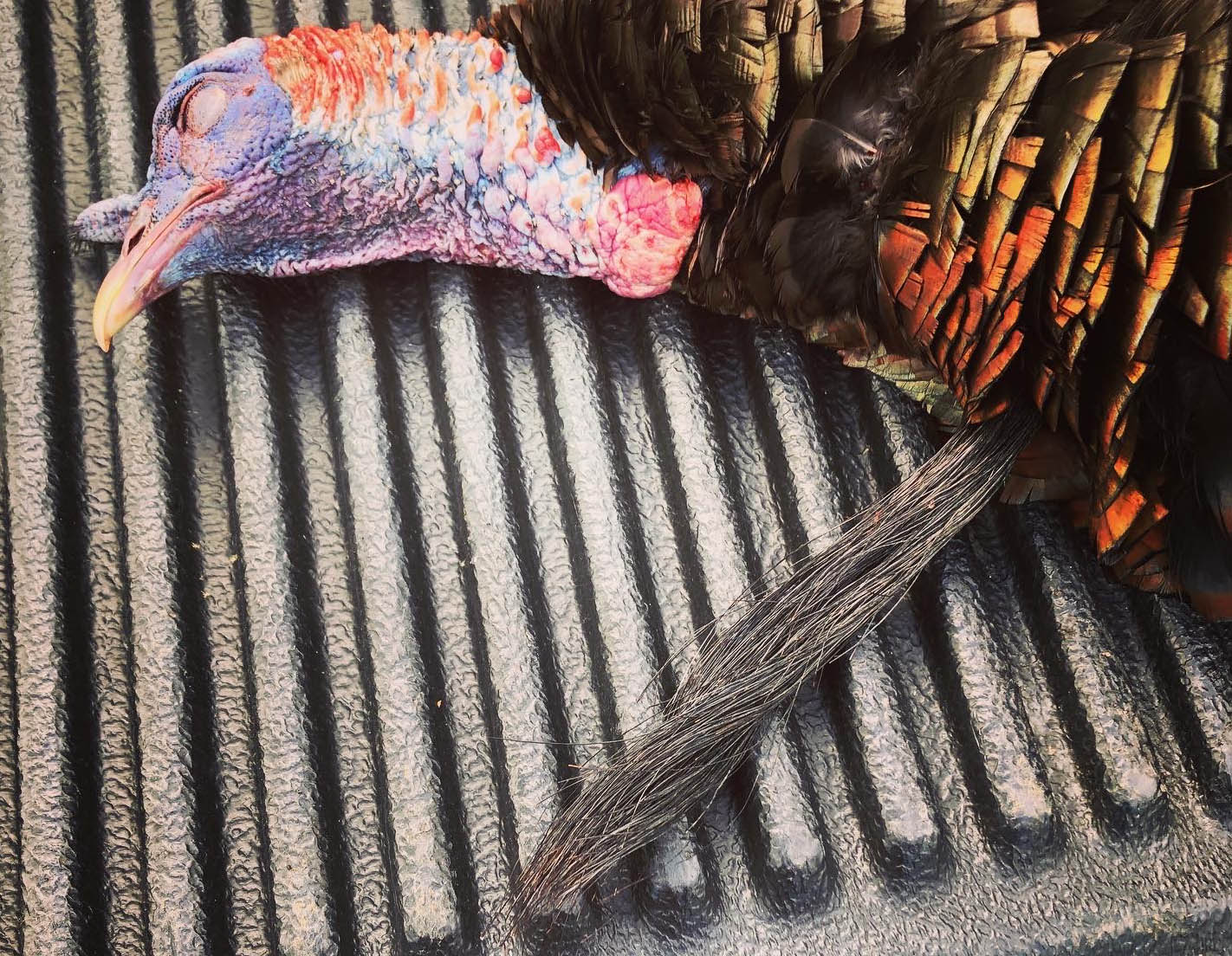
Snood, there it is!
Is that a snood, or are you just happy to see me?
Hens and gobblers have snoodles, which are wrinkly-looking appendages on their face. It’s at the base of the beak between their eyes. The snood on a hen looks like a gray spur, while a gobbler’s snood is longer and dangles more easily. Both genders have wattles, too. These are the bumpy, knobby skin bits under the beak along the neck.
The snood is part of a gobbler’s sexual attractiveness to hens. During the courtship stage, when a gobbler has his harem and is breeding, the snood is a sign to them that he is robust, healthy, and ready to go. Older gobblers typically exhibit longer, thicker snoods and beards. The latter is more visually appealing to hunters, while the colorful snood may be what gets a hen’s motor running.
It also is a visual to other gobblers, including younger ones, that Big Snoody doesn’t play when they want to try to swipe a hen.
Omnivorous Feeders
Turkeys eat like they’re at a loaded, triple-tiered salad bar that serves the best available foods each season. Yes, turkeys enjoy seasonal greens, seeds, nuts, and berries and will add grasshoppers, crickets, and other insects to their diet. Given the right opportunity, they might even snack on a snake, frog, or mouse.
Turkeys are omnivorous, meaning they don’t eat just plants or meat. They eat the best available food source at the time. I’ve been in camps with wetlands, and the hosts say turkeys will pluck little peeper frogs in spring. Two weeks or a month later, though, frogs may be off the menu if grasshoppers have hatched. Or, possibly, cicadas. It depends on the region of the country, of course. Turkeys in the desert Southwest won’t be munching on the same goodies as in West Virginia, and vice versa. Wild turkeys also learn that dairy and cattle farms can be productive sites for picking up grains, either around barns or outbuildings or from poop.
Food plots offer turkeys a bonus, too, with chufa being one of the most popular things planted. Other grains or legumes can provide nutrition and great places to scratch, strut, and flutter around in dust baths.
Spurs and Beards
Spurs and beards are the primary measuring sticks for hunters who seek a mature gobbler. These two features are pretty interesting to learn about.
Spurs grow from little nubs on the back of a turkey’s leg just below the knee. Turkeys are born with these little nubs. Hens have them, but, for some reason, they don’t grow; some hens may have spurs, but that’s an unusual event. Gobbers’ spurs begin growing and may be 1 ½- or 2 inches on some birds.
Spurs are made of keratin, which is what the birds’ scales on their feet are made of. Keratin is a “fibrous protein” that creates hair, fingernails, and toenails in humans. In animals, keratin creates hooves, claws, and horns (like on pronghorns or cattle), and on turkeys, the spurs.
The beard of a turkey looks like a clump of stiff hair, but it’s not hair. Nor are these little fibers feathers, although it’s close to that. They’re called mesofiloplumes. They typically grow from one spot on the chest. Some gobblers have thick, long, bushy beards, and others may have scraggly, thin, skinny beards. Others may have no beard; the mesofiloplumes could have been broken off or possibly harmed by mites or something else.
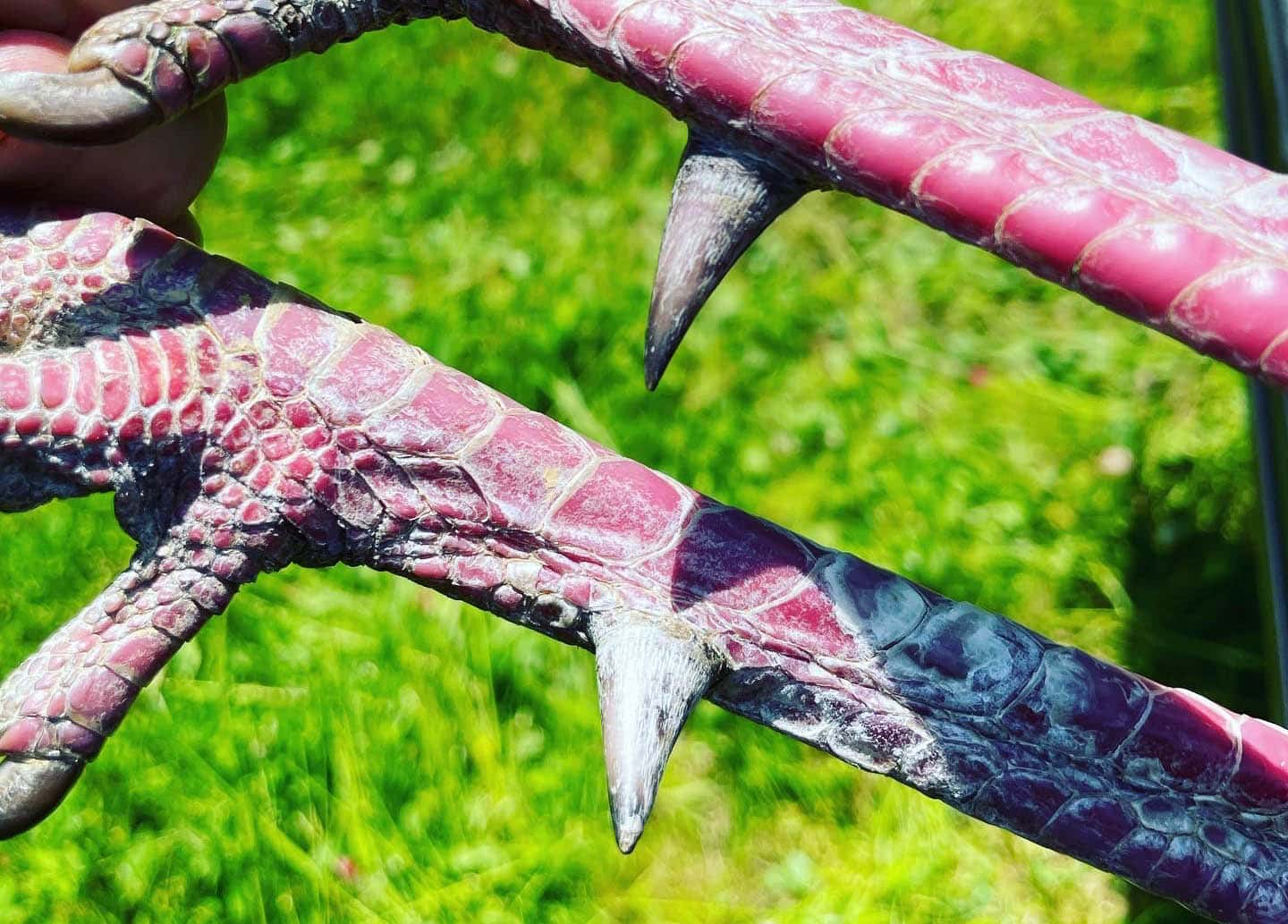
In some instances, a turkey will have multiple beards. These are coveted among hunters due to their rarity. For record-keeping purposes, a turkey’s beard length and spur lengths are measured and combined with the weight to get the total. Multiple beards are measured, often resulting in high scores.
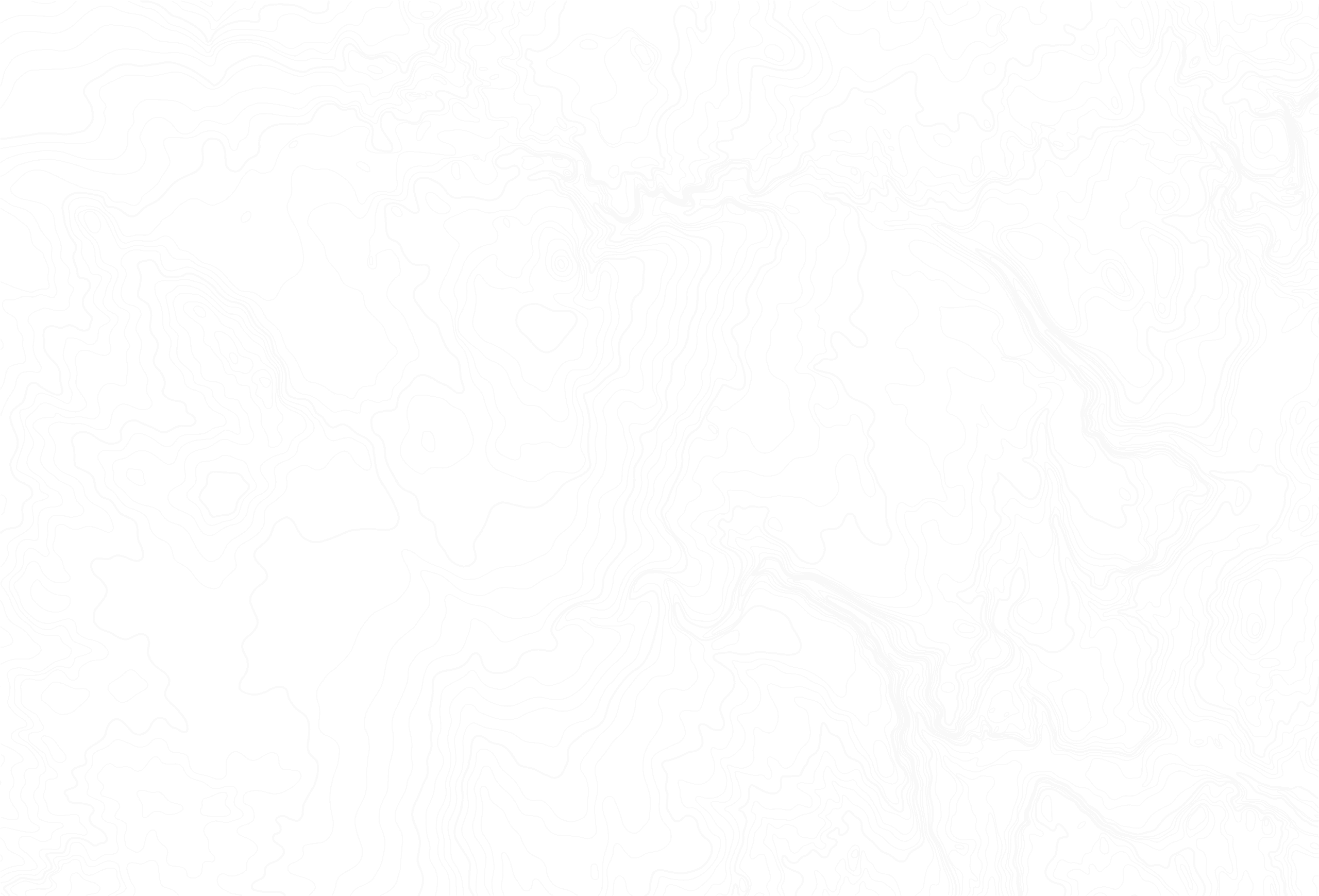
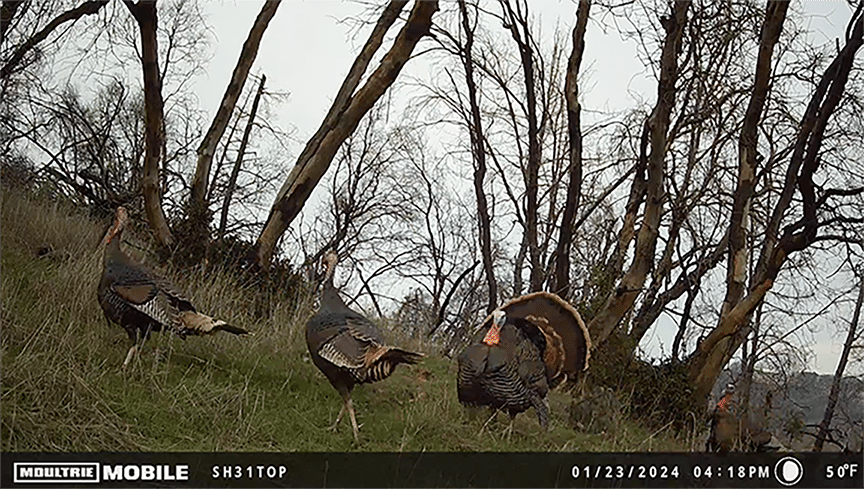
Featured
If you are eager to take your turkey hunting knowledge to the next level, these tips will help you get the most out of your trail camera placements.
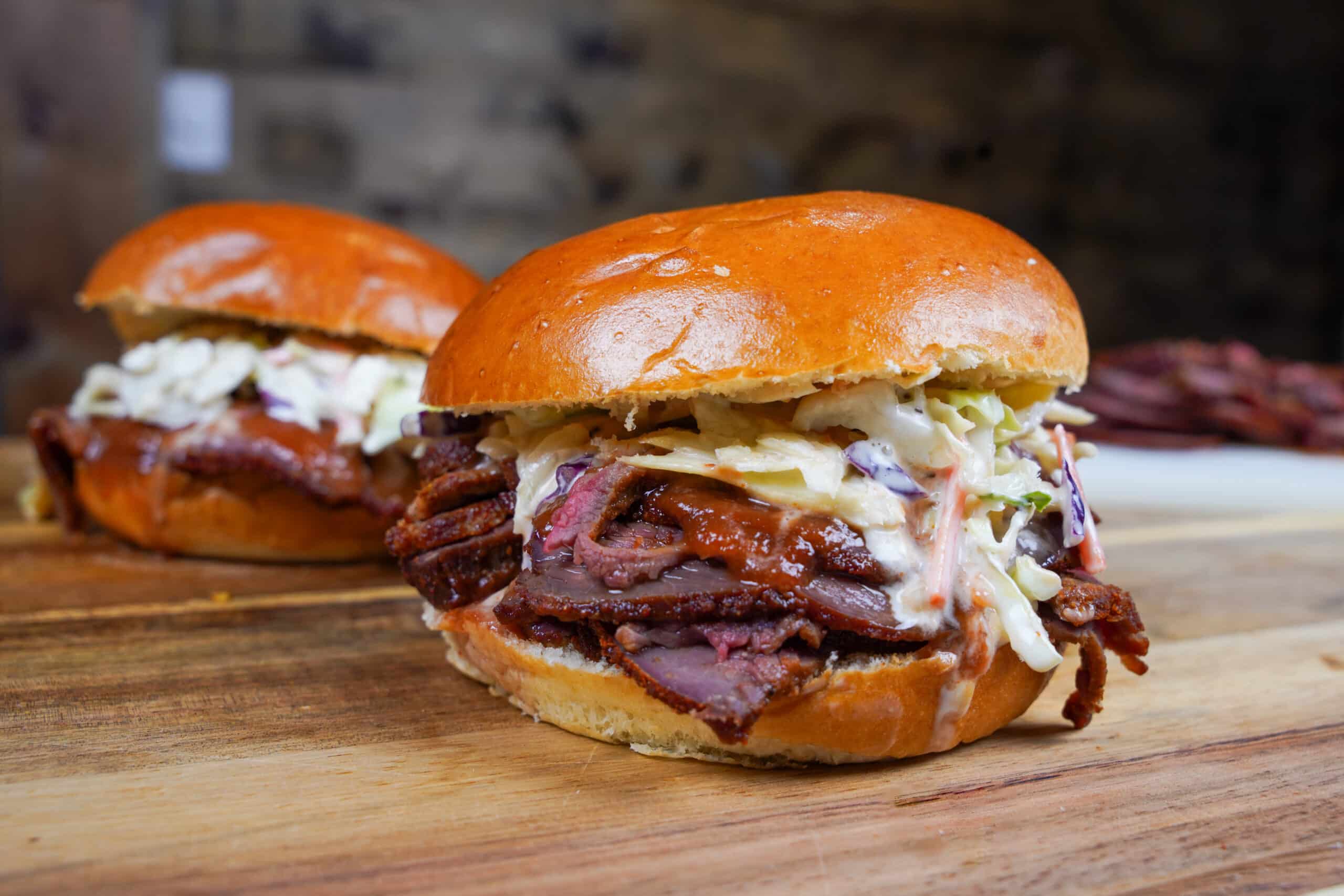
Featured
This recipe is great for hosting a weekend lunch crowd. The process starts the night before with a simple brine with added aromatics. The brine helps retain moisture in the meat during cooking, making the meat juicier and more tender.
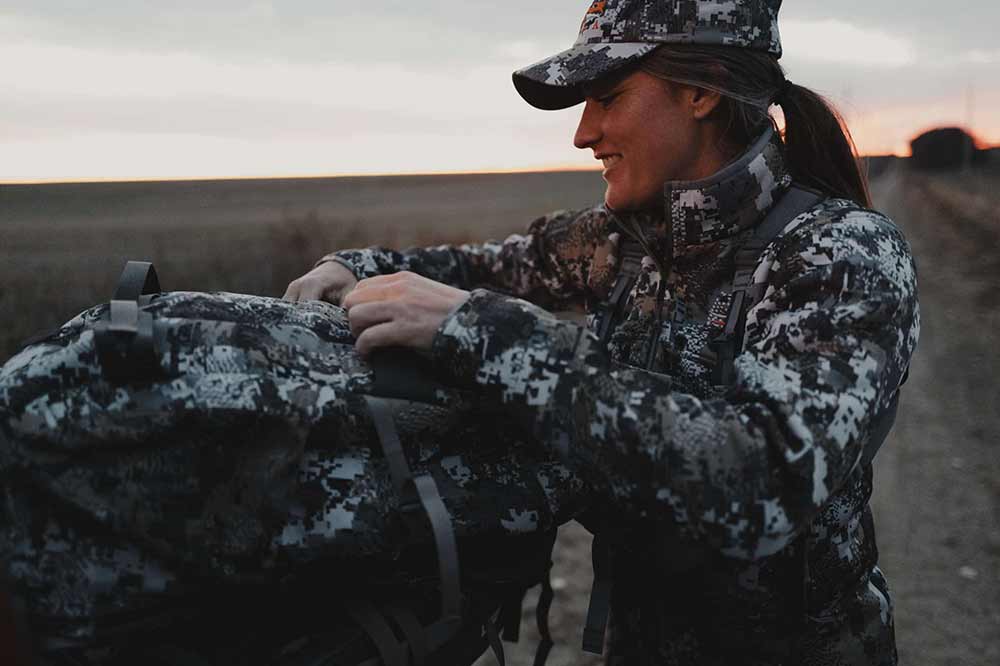
Featured
Women have hunted throughout history, and today, the number of female hunters continues to climb based on data from the US Fish and Wildlife Service.



